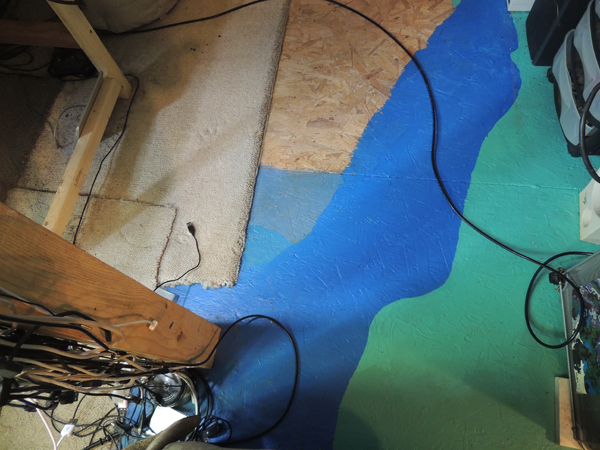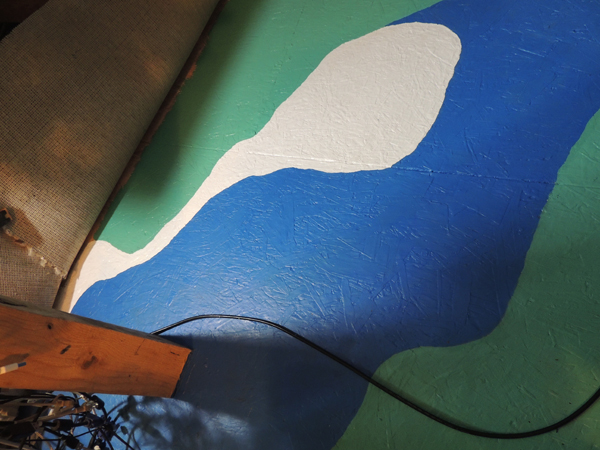| Your leaking thatched hut during the restoration of a pre-Enlightenment state. |
Hello, my name is Judas Gutenberg and this is my blaag (pronounced as you would the vomit noise "hyroop-bleuach").
links
decay & ruin
Biosphere II
Chernobyl
dead malls
Detroit
Irving housing
got that wrong
Paleofuture.com
appropriate tech
Arduino μcontrollers
Backwoods Home
Fractal antenna
fun social media stuff
Like asecular.com
(nobody does!)
Like my brownhouse:
Monday, May 17 2021

Several versions of the dark blue along with adjacent bare OSB. The wood is the new Woodchuck desk I'd built back in January.
You can see the support column the rises up to meet the base of the southest corner pillar of the solar deck at the roof.

New colors after I'd peeled the carpet out of the way and painted.
private static IServiceCollection AddMigrations(this IServiceCollection services, Assembly assembly)
{
var types = assembly
.GetTypes()
.Where(x => x.BaseType != null && !x.IsAbstract && x.GetInterfaces().Any(y => y == typeof(IMigration)));
//Console.WriteLine("FFFFFFFFFFFFFFFFFFFFFFFFFFFFFFF");
//these are all the migration types such as XxxxxxYyyyyyZzzzzzzMigration, somehow gotten from types without hardcoding
//thus preventing any explicit connection between the migrations and this thing making them available
foreach (var type in types)
{
//Console.WriteLine(type.ToString());
services.AddScoped(typeof(IMigration), type);
}
//Console.WriteLine("++FFFFFFFFFFFFFFFFFFFFFFFFFFFFFFF");
return services;
}
Evidently there are "types" in the "assembly" (directories in the source?) that can be iterated through and have their scope added to the services. I'm still hazy on how this actually works, but this code somehow does it. Having cracked that nut, I could finally go to bed.
For linking purposes this article's URL is:
http://asecular.com/blog.php?210517
previous | next